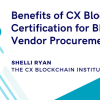Sourcing executives today are all about innovation and adding business value: buying smarter to drive business benefits such as increased customer satisfaction, reduced error rates and insights into product design. In other words, procurement operational strategy aspires to demonstrate alignment with factors driving the success of the business, which is more than just cost takeout.
Who could argue with that?
However, while the theoretical benefits of value-based sourcing are significant, the practical reality of building an effective business case for a value-based sourcing initiative currently presents a challenge to most procurement organisations. For one thing, concrete metrics for value-based initiatives are elusive because the cause/effect linkage of actions taken to benefits obtained can be imprecise: was higher satisfaction driven by better product design at the front end or improved product support at the back end?
Another consideration is that benefits linked to an initiative are tracked over time, rather than simply being captured at contract signing or an annual invoice/compliance true-up. The need to track benefits over time can result in incomplete or cross-allocated benefit recognition, particularly when improvements occur “downstream” or “upstream” from the initiative. For example, applying more effective controls to inventory management and back-end product support can reduce necessary inventory levels (downstream) as well as provide better and faster capture of product failure data to feed back to manufacturing and design (upstream). Most companies simply lack the discipline to track business case realisation in this type of situation.
Value realisation is also contingent upon the actions taken by the customer and the utilisation of information and insights resulting from the initiative. As a result, the business case isn’t simply a function of contract execution or successful implementation by a provider, but rather requires joint performance by the provider and the customer to deliver results. In other words, the “value” is derived from the relationship, and not from the independent performance of any single party to that relationship. Furthermore, this network of contributors extends within the customer organisation as well, and includes contributions by procurement, vendor management, finance and business operations teams.
Finally, the price of a value-based sourcing contract for technology or services may actually be higher than under the current state. In other words, champions of value-based sourcing are not only pushing new ideas, but are also asking for more money. This strikes a dissonant chord among traditional procurement professionals accustomed to prioritising cost reduction.
At the same time, traditional procurement evaluation and approval processes are not structured to include a quantitative analysis around benefits, and simply categorise these ambiguously as “value adds.” As a result, the process is not typically receptive to proposals that don’t show a specific, quantifiable return based on a calculation of savings achieved.
In this environment, many sourcing and procurement executives revert to their comfort zone of a traditional price-centric Total Cost of Ownership (TCO) model. The benefit of this approach is to enable a concrete calculation showing that investment in x initiative will yield y in cost savings. What’s missing, however, is the ability to capture the full range of return on investment (ROI) benefits that can be achieved – these include metrics such as competitive differentiation, customer insight or risk mitigation, all of which are key indicators or business value.
The way to transcend this narrow focus on cost reduction is to embrace a degree of ambiguity that characterises business value and develop the analytics and discipline to track and refine estimates over time. Executives should accept the reality that many of the benefits enabled by SMAC technologies and automation and by innovative service delivery models must be estimated and refined using sophisticated analytical models, rather than based on relatively simple total cost comparisons between current and previous periods. It’s hard work, but can result in developing more effective business cases to articulate the benefits of value-based sourcing.
So what does a value-based business case look like? One key is to apply metrics that quantify the potential impact of the sourcing initiative over the long term, and to trace the benefit reach across the value chain. Risk mitigation benefits, for example, can be assessed through assumptions and forecasts that calculate the probability of risk before and after the initiative. Benefits, meanwhile, can be assessed by dollar impact, as savings that result from a reduced probability of risk, as well as the cost of absorbing that risk. Multi-faceted assumptions and projections can be similarly applied to metrics such as the impact of reduced product defects on customer satisfaction and repeat sales.
Advancing to value-based models will obviously require significant change management to overcome stakeholder skepticism. Effective measurement and reporting mechanisms can address persistent questions as to whether the savings are “real.” While benefits can be estimated at the time of contract, they must be monitored and measured over time, recognising the fact that they may only occur months or years after contract, and are highly dependent upon the company’s ability to manage a collaborative relationship and implement transformative change. In addition, benefits need to be collaboratively estimated and monitored in cooperation with business stakeholders and the provider. Finally, benefit estimates and underlying assumptions should be conservative, as over-promising and then failing to deliver sets a precedent that can’t be reversed.
Clients increasingly demand value and innovation from their strategic suppliers and providers, including software and infrastructure suppliers, outsourcing providers and consultants. Suppliers increasingly tout their capabilities to deliver. Yet lack of innovation continues to be a frequently cited source of dissatisfaction with many sourced relationships. Reassessing how we measure value and reward innovation can go a long way towards improving sourcing outcomes.






